The Federal Communication Commission has approved Globalstar use of its 2.4-GHz spectrum to create a terrestrial mobile communications network, after Globalstar revised its original plan that would have used a guard band separating its own spectrum from that used by Wi-Fi.
The new plan allows Globalstar to deploy its 11.5-Mhz of spectrum commercially without risk of interference with Bluetooth or Wi-Fi services using channel 14 or channel 11.
In 2012, the company asked for permission to combine its own spectrum with the “guard band” set aside in 2.4 GHz to protect Wi-Fi users of channel 14.
Now the issue is whether a business case can be created for the network Globalstar wants to build. Up to this point, Globalstar has talked about using its spectrum and network to create public hotspots in large venues.
The issue is whether that application, using a specialized network, can gain traction in a market that is rapidly evolving towards use of other public Wi-Fi and small cell networks with a lot more bandwidth, on platforms with other existing revenue streams, and with lots of other unlicensed and licensed spectrum to be made available that also are best suited to small cell and high-density applications.
In fact, the release of huge amounts of new millimeter wave spectrum to support 5G services will increase the amount of spectrum available for various communication uses (mobile, fixed, unlicensed) by an order or magnitude or two orders of magnitude (10 times to 100 times). Under such conditions, it will be hard to create an ecosystem, network or devices to accommodate the proprietary air interface Globalstar has said it will use.
It is hard to say in advance whether Globalstar will succeed with its plan, under such conditions. Prospects might arguably have been brighter under conditions of greater spectrum scarcity, but that seems likely to change drastically, given new use of shared spectrum, unlicensed spectrum and new spectrum that is coming.



